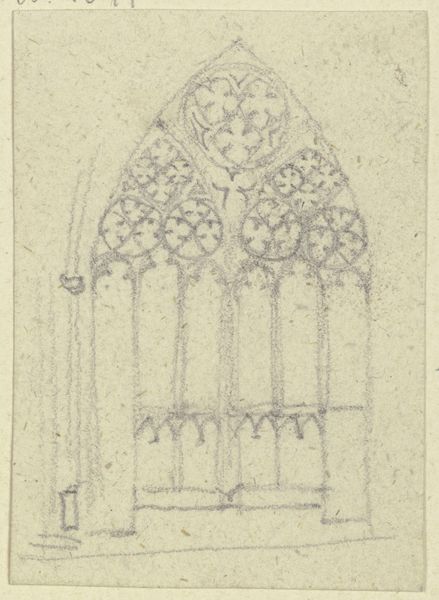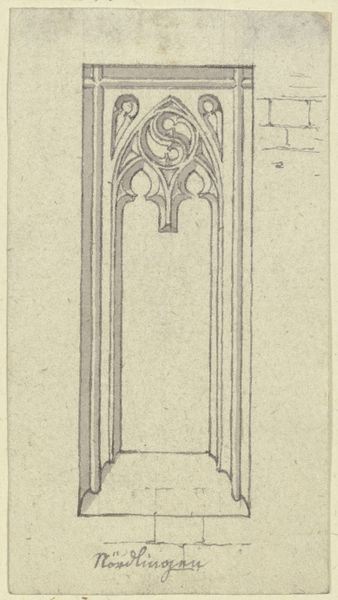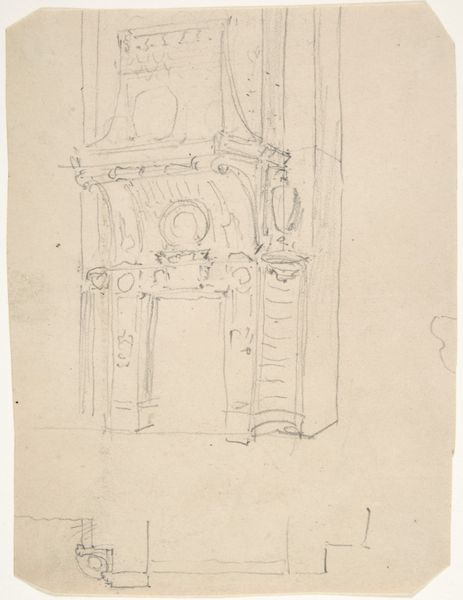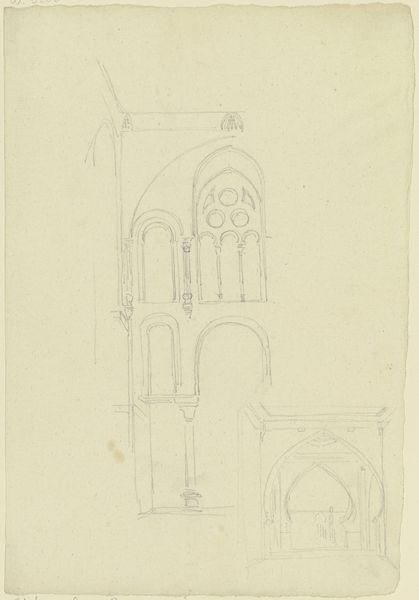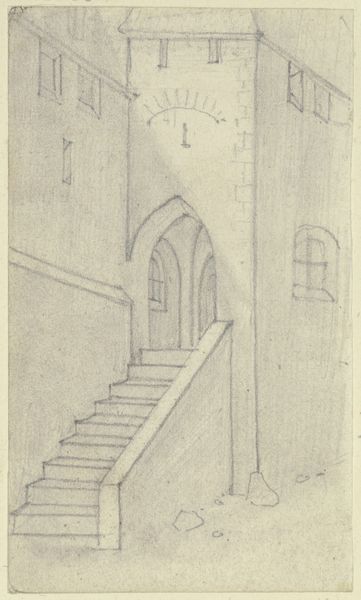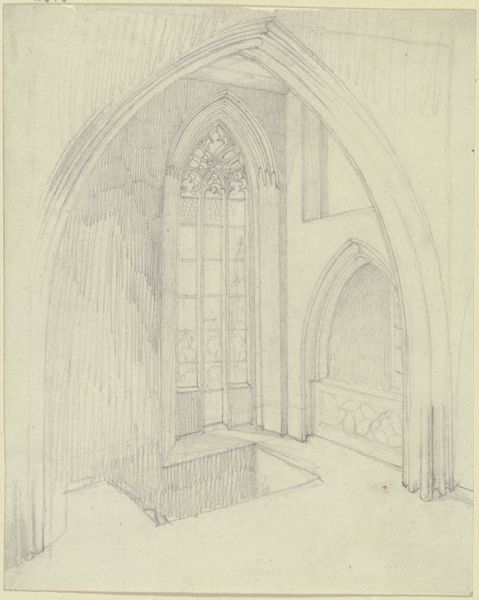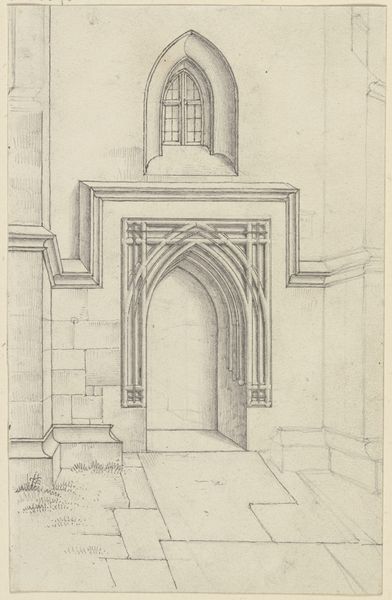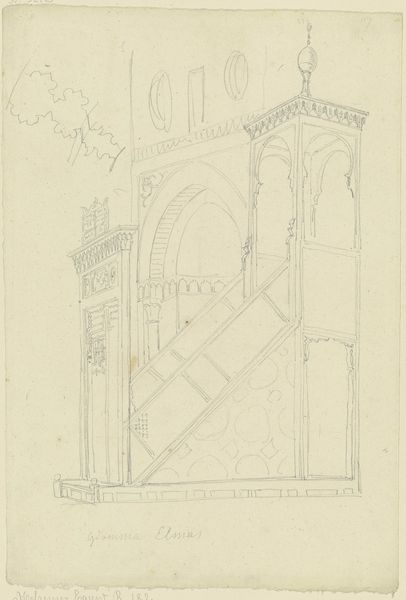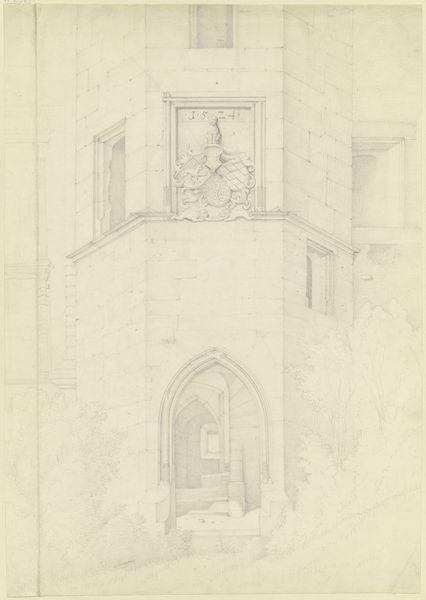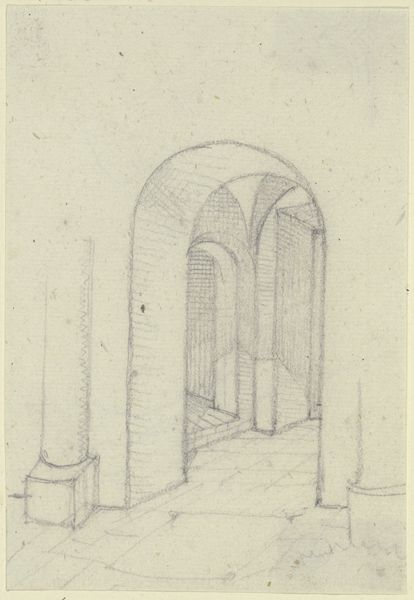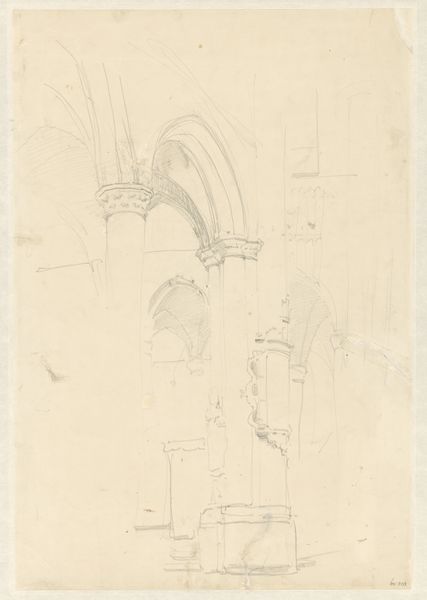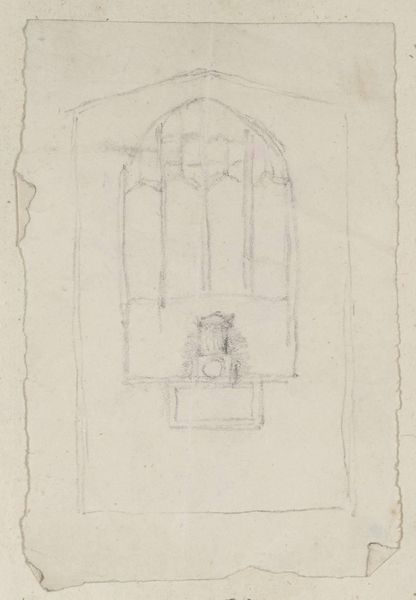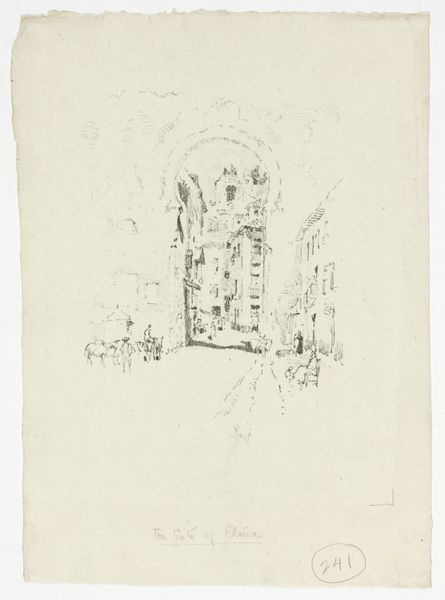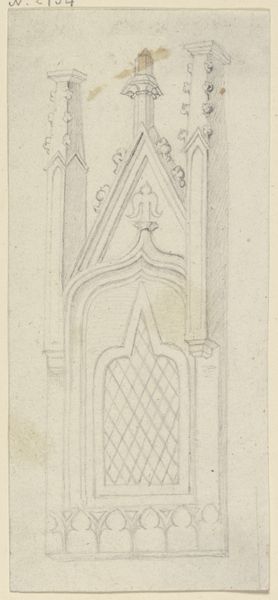
Das Brautportal an der Nordfassade von Sankt Sebald in Nürnberg
0:00
0:00
drawing, paper, pencil
#
drawing
#
16_19th-century
#
medieval
#
gothic
#
paper
#
form
#
pencil
#
architectural drawing
#
line
Copyright: Public Domain
Curator: This is Karl Ballenberger's "Das Brautportal an der Nordfassade von Sankt Sebald in Nürnberg," a pencil drawing on paper housed right here in the Städel Museum. It presents the north portal of the St. Sebaldus Church. Editor: My first impression is one of ethereal lightness. The architectural details are captured with such delicate lines, it almost feels as if the portal is emerging from mist, an incomplete apparition. Curator: Indeed. Ballenberger likely executed this as a preparatory sketch. What's fascinating to me is considering the sociopolitical role of architecture itself. St. Sebaldus, a major church, functioned as a community center, its architecture silently shaping social interactions, hierarchies, and expressions of faith. Editor: I agree. And we can examine that architectural language in connection to societal structures – who had access, who was excluded? Portals, like the Brautportal or "Bride's Portal" featured here, were often sites of ritual and symbolism related to marriage. The design becomes not just stone but a coded visual discourse about gender roles, class expectations, and power dynamics in marriage. Curator: Exactly. It's worth asking how art from the medieval Gothic period like this gets viewed through a contemporary lens. What impact might its imagery have on how traditional marriage is still viewed, with implications for modern marital concepts, like same-sex marriage? Ballenberger captures it in a rather idealised way here. Editor: Yes, he does idealise it. The drawing’s style elevates this doorway with soft rendering that almost glows, and invites scrutiny into its cultural value at that moment and ours. It almost transforms it from simply a physical object into an loaded symbol. Curator: A portal not just of stone, but of ideology! Editor: Precisely! Considering Ballenberger's choice of medium, pencil on paper allows an intimacy, different than the cold architecture. One invites reflection on the relationship between art, architecture and how each can serve ideological underpinnings. Curator: A great way to explore a lasting mark, literally and metaphorically, on the urban and mental landscapes of Nuremberg. Editor: Leaving one to ponder about these subtle yet critical roles they played in that past moment, in addition to shaping our world of now.
Comments
No comments
Be the first to comment and join the conversation on the ultimate creative platform.
